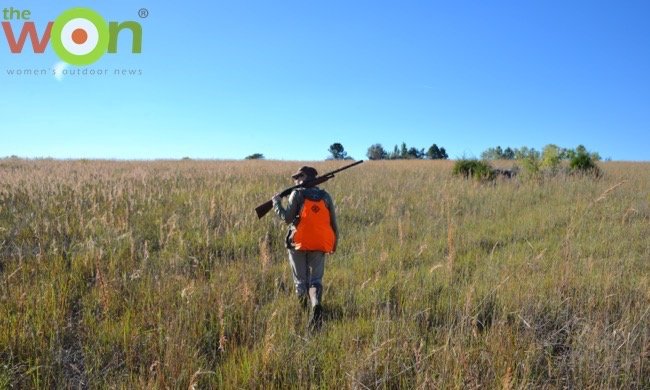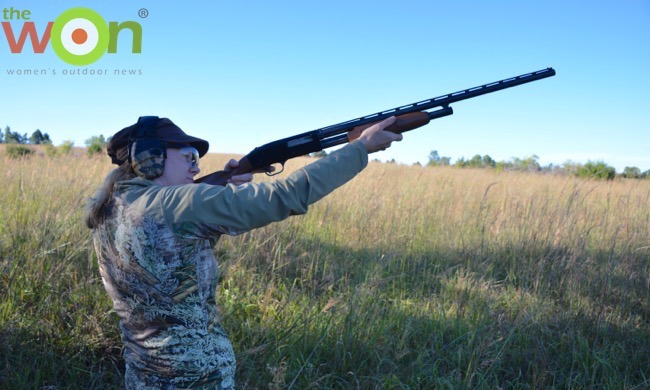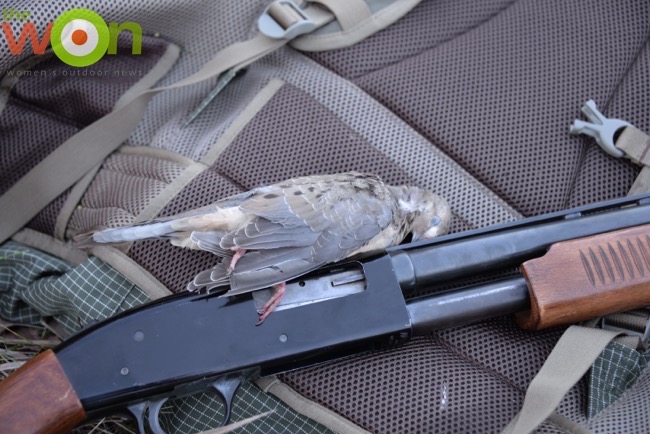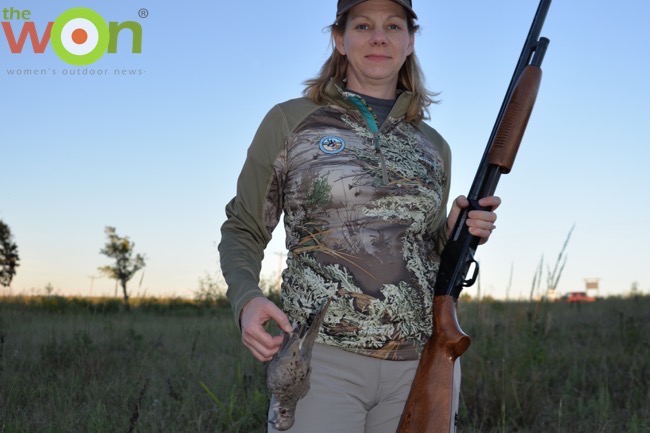I’m walking through the prairie toward a small stand of tall shrubs. My shotgun is in my hands and I am watching for movement. As I approach the shrubs, I see a gray shape flit about the leaves; a dove flies out from behind the stand. I raise the shotgun, look down the barrel and take the shot.
This is my first time hunting doves. My entire shooting experience can be neatly packaged into 5 years: 3 turkey hunts, 1 antelope hunt, a handful of deer hunts, and 2 mule deer does in the freezer. With the exception of the antelope hunt, which was guided and sponsored by the Wyoming Women’s Foundation, my hunts have involved time with my husband—just the two of us.
Today’s hunt is no different. My husband, who hunted doves as a youth, drives me out to public land and coaches me on the nuances of dove hunting. He tells me to keep the barrel a few inches in front of the dove so that it will fly into my lead. He reminds me to shoulder the shotgun and keep my cheek on the stock. He informs me that doves eat seeds, ingest little rocks to help with digestion, and stop at nearby water sources before roosting in the evening.

(Kevin Paulson, HuntingLife.com photo)
We start by walking a little way into the local wildlife management area and setting up small folding stools at the edge of some trees. We sit and wait. Wearing my Impact Sport electronic earmuffs not only protect my hearing, but they actually amplify low level sounds, so I can hear what’s going on around me in full, clear sound. After a while we hear the distinctive flight of a dove. We look up and see it flying past us. I bring the shotgun up, take aim and pull the trigger. Nothing happens.
This is not new to me; I’ve done it before. I had the safety on.
We wait some more. We see nothing in the air. I watch as a bright green grasshopper climbs up a big bluestem stalk. Slowly, he extends his back legs and pushes himself up the grass. I watch as another grasshopper climbs down a stalk, reminding me of a kid shinnying down a tree trunk. A third grasshopper jumps onto a piece of grass and its minuscule weight is enough to bend the grass over.
I think, “If this is all that happens this evening, I’m calling it a success.” I am sitting in a tallgrass prairie on the edge of a burr oak forest. My husband is beside me and there is no other sign of human existence, save the power line in the distance. I hear nothing manmade: just the buzz of insects, the song of the meadowlarks and the breeze through the grass.

(Kevin Paulson, HuntingLife.com photo)
We see a dove flying in a semi-regular pattern down the prairie a bit, so we decide to take a walk. I understand about spot-and-stalk hunting, a method I’ve used when chasing mule deer in the canyons. I realize this is not the most common method for hunting doves, however. But we walk on toward a grove of tall shrubs and small trees. We believe the dove flew into this little stand. We walk around to the other side and, sure enough, out flies a dove with its wings a-whistling.
Here comes the amazing part (to me, at least). As naturally as if I’d been doing this my whole life, I swing the shotgun up to my shoulder, rest my chin against the stock, lead the dove with the end of the barrel and pull the trigger—all in one ultra-smooth motion.
I hear the blast. I watch as the dove changes course. It continues its forward flight, but now with a downward trajectory. I follow the dove as it falls into the tall prairie grass. We walk over and find it, now lying motionless on the ground.

I don’t feel the huge sense of relief that I feel when I make a fatal connection with a deer. And I don’t feel a big sense of accomplishment, either. I feel something completely different, but good.
I feel relaxed. I feel calm. I feel normal. If this were a sport, I would say I was “in the zone.” Instead, you might say I am in my element. Walking in the prairie with a shotgun in my hands, looking for a small bird flying by, just seems natural. Seeing, swinging, aiming and pulling, all in one smooth motion, just seems natural.

(Kevin Paulson, HuntingLife.com photo)
As we walk out of the prairie, shotgun on my shoulder and dove in my hand, the sky turns pink. The sun sinks beneath the tops of the oak trees. A warm breeze stirs the grasses and the stray strands of hair that escape my cap. As I often do when I walk through the prairie, I imagine myself a pioneer in this land. For a moment, I feel satisfied that I would have survived.